The Linguistic Miracles of the Qur’an: A Reflection on its Eloquence and Precision
The Qur’an stands as an extraordinary testament to the beauty and depth of the Arabic language. Its linguistic brilliance has captivated scholars, poets, and linguists throughout history. Unlike any conventional form of poetry or prose, the Qur’an’s unique style transcends human literary norms, presenting an unmatched form of eloquence. Even the most eloquent Arab speakers of its time, including Al-Walid ibn Al-Mughira and Utbah ibn Rabi’ah, acknowledged its divine nature. This article explores the Qur’an's linguistic miracles by examining its contextual precision, rhetorical uniqueness, rare word choices, phonetic features, and grammatical structures.
Contextual Precision in the Qur’an:
One of the most striking aspects of the Qur’an is its precise choice of words based on the context. A well-known historical incident illustrates this concept. Al-Asmaʿī, a renowned Arabic scholar, once recited:
وَالسَّارِقُ وَالسَّارِقَةُ فَاقْطَعُوا أَيْدِيَهُمَا جَزَاءً بِمَا كَسَبَا نَكَالًا مِّن اللَّهِ وَاللَّهُ عَفُورٌ رَّحِيمٌ
(As for the thief, the male and the female, amputate their hands as recompense for what they committed as a deterrent from Allah. And Allah is Forgiving and Merciful.)
A Bedouin listener (Aʿrābī) immediately objected, asserting that it was impossible for the verse to end with "وَاللَّهُ عَفُورٌ رَّحِيمٌ" (And Allah is Forgiving and Merciful). In a context of punishment, such an ending seemed inappropriate. The actual verse (Surah Al-Ma’idah 5:38) concludes with "وَاللَّهُ عَزِيزٌ حَكِيمٌ" (And Allah is Mighty and Wise), reflecting Allah's justice and wisdom. This incident exemplifies the Qur’an's contextual accuracy, ensuring that every word harmonizes with the intended message.
The Rhetorical Power of the Qur’an:
The Qur’an’s rhetorical brilliance is evident in its choice of rare and powerful words that amplify its message. A remarkable example is the use of the word "ضيزى" (Diẓā) in Surah An-Najm:
"أَلَكُمُ الذَّكَرُ وَلَهُ الْأُنثَىٰ تِلْكَ إِذًا قِسْمَةٌ ضِيزَىٰ"
(Is the male for you and the female for Him? That, then, is an unjust division.) (Surah An-Najm 53:21-22)
The word "ضيزى" is exceedingly rare in Arabic literature, meaning "unjust" or "inequitable." Its usage in this verse emphasizes the absurdity of the Quraysh’s belief that angels were daughters of Allah while they preferred sons for themselves. The rarity of the word not only captures attention but also enhances the rhetorical impact of the verse. Additionally, the word seamlessly aligns with the phonetic rhythm of the Surah, maintaining the musicality of the text.
Historical Recognition of the Qur’an’s Linguistic Brilliance:
A prominent historical example of the Qur’an’s impact is the reaction of Al-Walid ibn Al-Mughira, an eloquent Arab leader known for his mastery of poetry. Upon hearing the Qur’an, Al-Walid was deeply moved and acknowledged its unmatched eloquence. Despite pressure from Abu Jahl to denounce the Qur’an, Al-Walid admitted its divine nature. However, to maintain his social standing, he later accused the Qur’an of being sorcery. In response, Allah revealed verses condemning his denial:
"إِنَّهُ فَكَّرَ وَقَدَّرَ . فَقُتِلَ كَيْفَ قَدَّرَ"
(Indeed, he thought and deliberated. So may he be destroyed for how he deliberated.) (Surah Al-Muddathir 74:18-19)
This incident highlights how even the Qur’an’s opponents recognized its unparalleled linguistic excellence.
Palindrome in the Qur’an:
The Qur’an also demonstrates linguistic sophistication through the use of palindromes—phrases that read the same forwards and backwards. This symmetrical arrangement not only enhances the aesthetic appeal of the text but also contributes to its rhythmic and phonetic harmony.
One example is:
"وَرَبَّكَ فَكَبِّرْ"
(And magnify your Lord!) (Surah Al-Muddathir 74:3)
Another notable example of a palindrome is:
"كُلٌّ فِي فَلَكٍ"
(Each in an orbit is swimming.) (Surah Ya-Sin 36:40)
This verse describes the celestial bodies moving in their designated orbits, and its circular structure beautifully mirrors the concept of constant, cyclical motion. Such artistic use of language exemplifies the Qur’an’s unmatched eloquence.
Precise Word Choices: The Use of أتى and جاء:
The Qur’an's precision is further evident in its use of words with similar meanings but distinct nuances. The words أتى (athā) and جاء (jā’a) both mean "to come," yet their application differs:
أتى (athā) denotes approaching a destination without necessarily arriving.
Example: "حَتَّى إِذَا أَتَوْا عَلَى وَادِ النَّمْلِ" (Until when they came upon the valley of the ants...) (Surah An-Naml 27:18)
جاء (jā’a) indicates the completion of arrival.
Example: "فَلَمَّا جَاءَ آلَ لُوطٍ الْمُرْسَلُونَ" (And when the messengers came to the household of Lut...) (Surah Hud 11:81)
This subtle distinction enriches the Qur’an's meaning, illustrating its unparalleled precision.
Similarly, the Qur’an differentiates between خاطئ (khāṭiʾ) and مخطئ (mukhṭiʾ), both related to errors:
خاطئ (khāṭiʾ) refers to a deliberate mistake or sin.
Example: "إِنَّ جُنُودَ هَامَانَ وَفِرْعَوْنَ كَانُوا خَاطِئِينَ" (Surah Al-Qasas 28:8)
(Indeed, the soldiers of Haman and Pharaoh were deliberate wrongdoers.)
مخطئ (mukhṭiʾ), on the other hand, refers to an unintentional mistake.
Example: "رَبَّنَا لَا تُؤَاخِذْنَا إِن نَّسِينَا أَوْ أَخْطَأْنَا" (Surah Al-Baqarah 2:286)
(Our Lord, do not impose blame upon us if we forget or make a mistake.)
These subtle differences demonstrate the precision with which the Qur’an conveys meanings.
The Use of ‘Imra’ah’ in the Qur’an:
The Qur’an also carefully selects words to indicate relationships and suitability. The word امرأة (imra’ah, meaning "woman" or "wife") is used when there is some form of discord or unsuitability between the husband and wife. Examples include:
"امرأة لوط" (The wife of Lut) – She was not a believer, whereas Prophet Lut (عليه السلام) was a righteous prophet.
"امرأة فرعون" (The wife of Pharaoh) – She was a believer (Asiyah) while her husband was a tyrant and a disbeliever.
In contrast, when there is harmony and companionship between spouses, the Qur’an uses زوج (zawj), meaning "mate" or "spouse.”
Contextual Use of Singular and Plural Forms:
The Qur’an’s choice of singular and plural forms also reflects its linguistic brilliance.
"الألباب" (Al-Albāb) refers to intellects and is always used in its plural form to emphasize deep reflection.
"أكواب" (Akwāb) is used for cups in its plural form, enhancing poetic elegance.
"الأرض" (Al-Arḍ) is consistently used in the singular to signify the Earth’s unique nature. When referring to multiple Earths, the Qur’an uses figurative language instead of the plural form "أرضين" (Arḍīn).
(Figurative language uses words or expressions with meanings different from their literal interpretation to create vivid imagery or convey complex ideas. It includes devices like metaphors, similes, personification, and hyperbole to enhance the emotional and imaginative impact of the text.)
Grammatical Nuances in the Qur’an:
The Qur’an also uses grammar to convey deep meanings beyond masculinity and femininity. One example is the word عاقبة (ʿāqibah), which is grammatically feminine. However, the Qur’an sometimes pairs it with masculine verbs to indicate a negative outcome:
"كَانَ عَاقِبَةُ الْمُكَذِّبِينَ" (Surah Al-Ra’d 13:25) – Here, kana (masculine verb) is used, emphasizing a negative consequence.
Conversely, when referring to a positive outcome, the Qur’an pairs ʿāqibah with a feminine verb:
"تَكُونُ لَهُ عَاقِبَةُ الدَّارِ" (Surah Ar-Ra’d 13:22) – A feminine verb (takūnu) is used to reflect a favorable end.
Here Qur’an tries to introduce a new way of using masculine and feminine words.
Phonetics and Letter Attributes in the Qur’an:
Arabic letters possess distinct phonetic qualities that the Qur’an uses masterfully. Letters classified as حروف الشدة (letters of hardness) produce strong sounds, while حروف الرفو (letters of softness) create gentle sounds.
"هز" (huzz) in:
"وَهُزِّي إِلَيْكِ بِجِذْعِ النَّخْلَةِ"
(And shake toward you the trunk of the palm tree...) (Surah Maryam 19:25)
This word conveys a gentle movement, reflecting the softness of the act.
"أز" (azz) in:
"تُؤَزُّهُمْ أَزًّا"
(And incite them to action with strong incitement.) (Surah Al-Mu’minun 23:97)
Here, the word "أزا" suggests an intense force, emphasizing the severity and aggression of the action.
These phonetic choices heighten the emotional and visual impact of the verses, illustrating the Qur’an’s meticulous selection of words to convey meaning effectively.
Different Meanings Through Vowel Changes
Arabic diacritical marks (harakāt) significantly affect word meanings. The Qur’an uses this phenomenon to convey different meanings in the same word structure:
بر (barr with fatḥa) – Means land
بِرّ (birr with kasra) – Refers to "charity" or "good deeds."
بر (burr with ḍamma) – Means wheat.
Similarly:
The word "كَرهاً" (karhan) refers to hardship or difficulty that a person experiences unwillingly, as seen in the verse:
"وَلِلَّهِ يَسْجُدُ مَنْ فِي السَّمَاوَاتِ وَالْأَرْضِ طَوْعًا وَكَرْهًا"
(And to Allah prostrates whoever is within the heavens and the earth, willingly or unwillingly) (Surah Ar-Ra’d 13:15).
On the other hand, "كُرهاً" (kurhan) with also indicates hardship, but the person endures it willingly despite its difficulty. Examples include the hardships a mother faces during pregnancy and childbirth, or the struggles of a soldier in battle. This is reflected in the verse:
"وَوَصَّيْنَا الْإِنْسَانَ بِوَالِدَيْهِ إِحْسَانًا حَمَلَتْهُ أُمُّهُ كُرْهًا وَوَضَعَتْهُ كُرْهًا"
(And We have enjoined upon man [care] for his parents. His mother carried him, [increasing her] in weakness upon weakness, and his weaning is in two years) (Surah Luqman 31:14).
Conclusion:
The Qur’an’s linguistic features, from its contextual precision and rare word choices to its rhetorical brilliance and phonetic harmony, testify to its divine origin. Even the most eloquent Arab linguists were unable to match its linguistic excellence. As a result, the Qur’an remains a source of literary marvel, captivating readers and scholars across generations. Its unparalleled eloquence continues to stand as an everlasting miracle, reaffirming its place as the ultimate testament of divine revelation.
About the author:
Muhammed Farooq from Neerkunnam, Alappuzha district, is a postgraduate scholar in the Department of Societal Development at Darul Huda Islamic University.
References:
1-Al-Tibyān fī ʿUlūm al-Qurʾān li-Ṣābūnī
2-Kitāb As-Sīrah An-Nabawiyyah fī Ḍawʾ Al-Qurʾān wa As-Sunnah-Muḥammad Abū Shahbah
3-Kitāb Jawāhir Qurʾāniyyah: 1000 Suʾāl wa Jawāb fī Al-Qurʾān-Qāsim ʿĀshūr
Disclaimer
The views expressed in this article are the author’s own and do not necessarily mirror Islamonweb’s editorial stance.

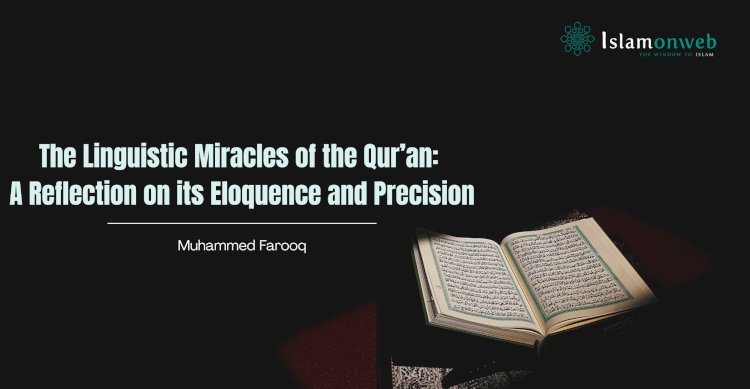



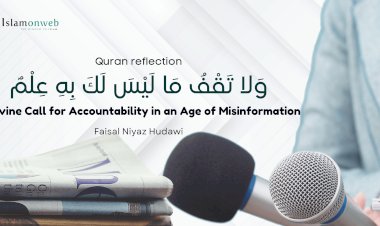
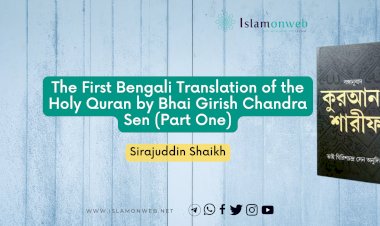
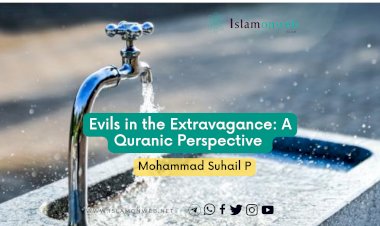














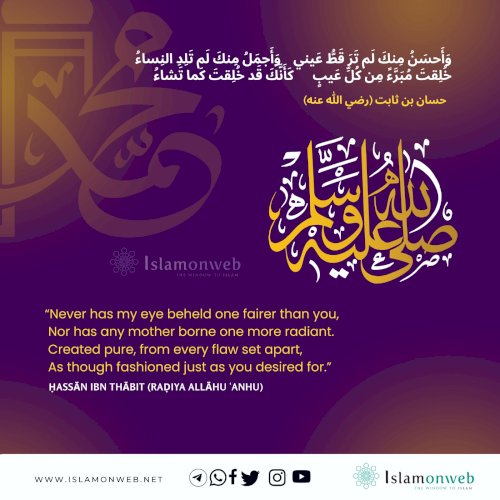

Leave A Comment